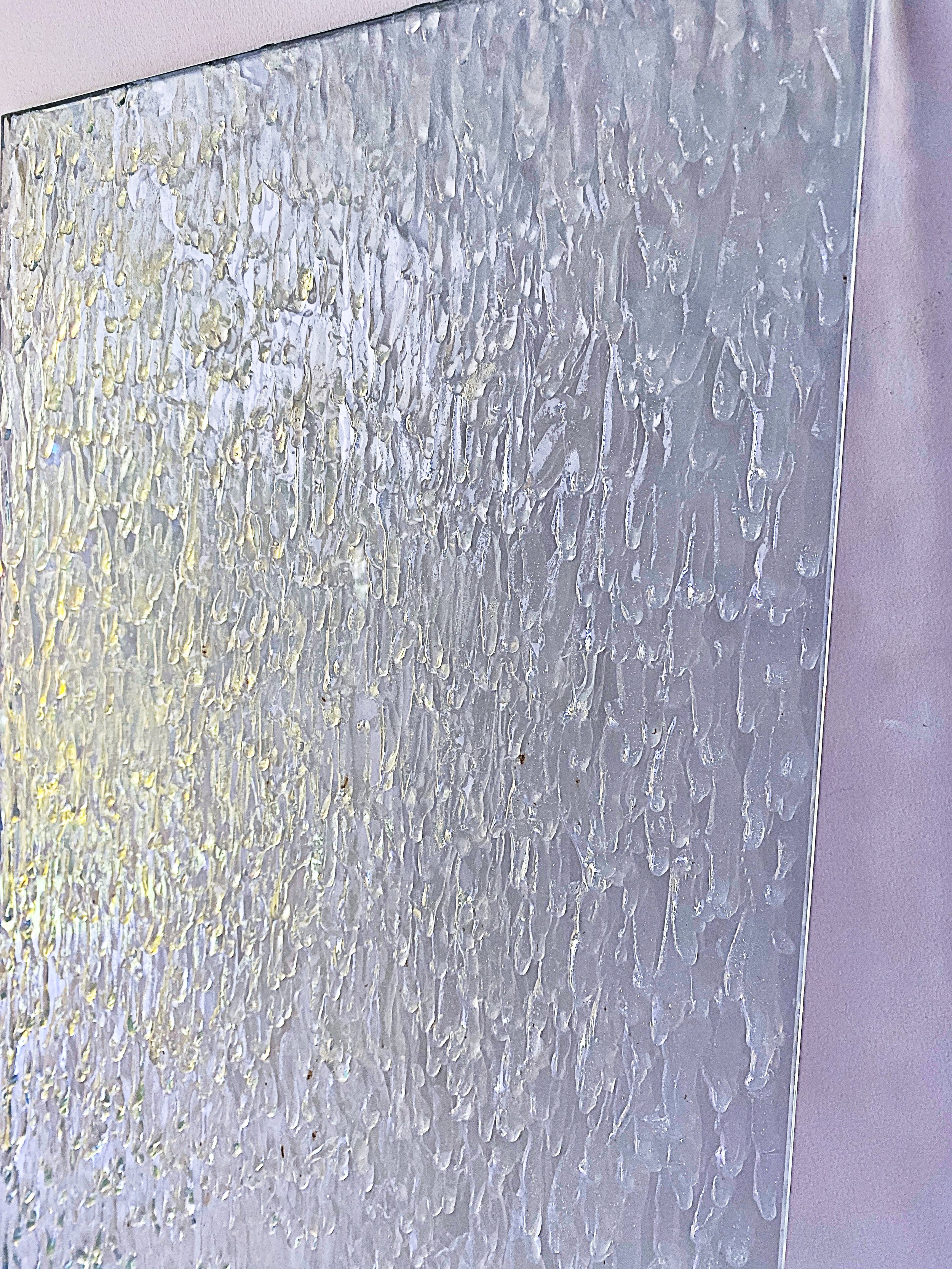Working on Glass
The bioplastic is challenging to work with and install because glue and tape does not stick to it and pin slice through it. An option that has been considered is glass as a base. Care has to be taken for using melted bioplastic on the glass as it is hot and it has cracked glass when I have poured it over glass in the past. Using glass for an install came about in a discussion at the last seminar.
I was kindly given some glass which I thought about how I could use and sketched out an idea of how they could sit in the studio space and how this could work with the wrack line on the floor. With this I was thinking of the glass covered bioplastic as being these connected bodies of water (as the ocean which. meets the sand but apart from high tide, doesn’t touch the wrack line). If the bioplastic oozes then that is good as it reinforces the the idea of a body of water and that ooze may travel on the floor like water travels on the shore.
I tested the bioplastic on the glass but I am not sure how it will dry. There is glycerin in the mix which makes the bioplastic more flexible (so it doesn’t crack when drying). It may not stay stuck to the glass but in that case it will just dry in a textured sheet.
I just used natural uncoloured bioplastic for this as that’s more true to water (it may dry with a yellowish tinge though). I worked with it upright and created a drip like texture. which keeps a connection to the bodies of water theme.
On a smaller piece of glass I drew a piece of kelp that I found on the beach. The bioplastic I used was coloured with natural pigment powder. I then drew texture around it with uncoloured bioplastic. With that I was think about the patterns and textures that water leave in sand as the tide goes out… that whole interplay of light reflecting on water and sand.
I will know in a couple of days when it’s cured. if this will work as far as staying on the glass.







